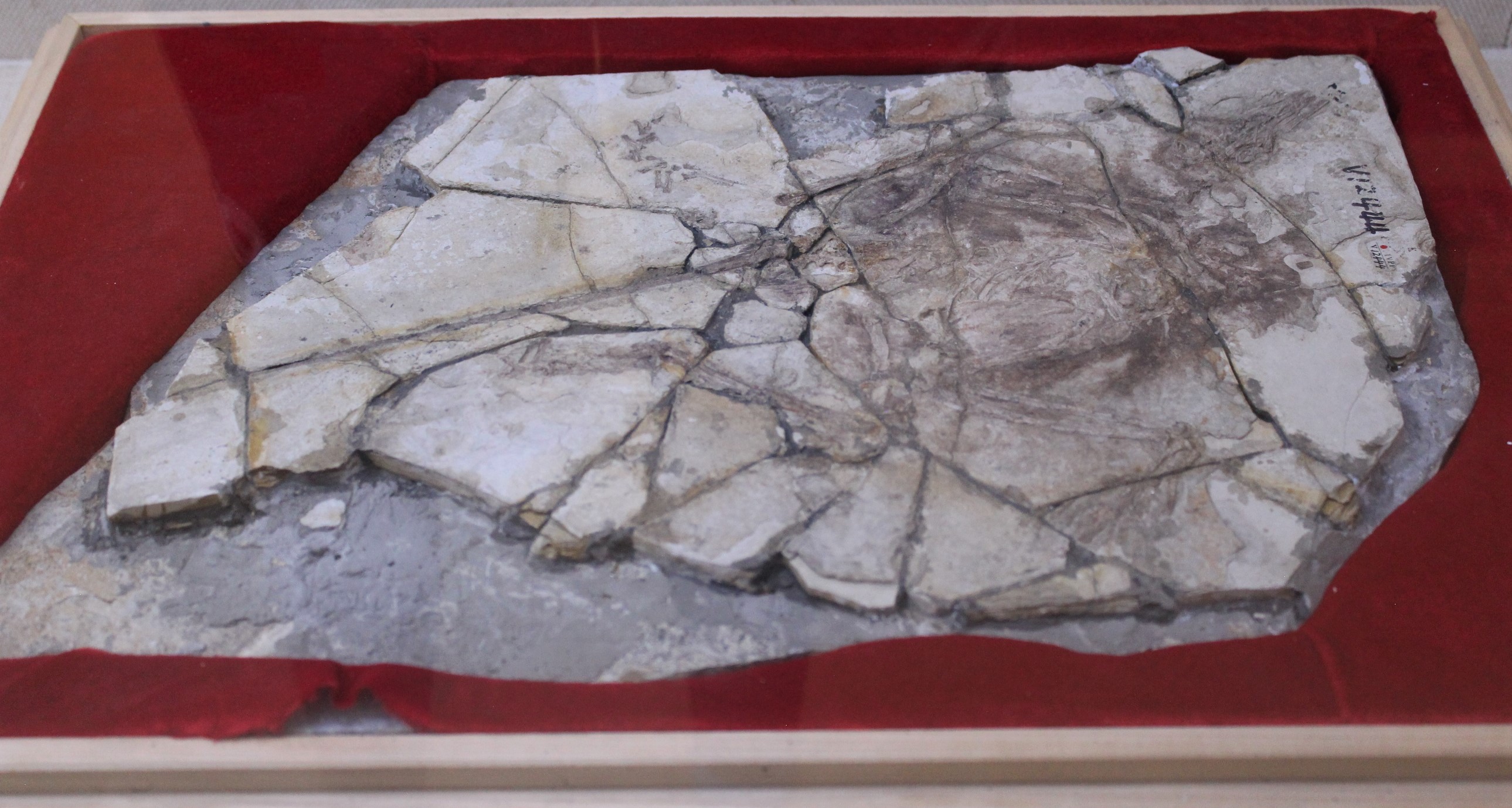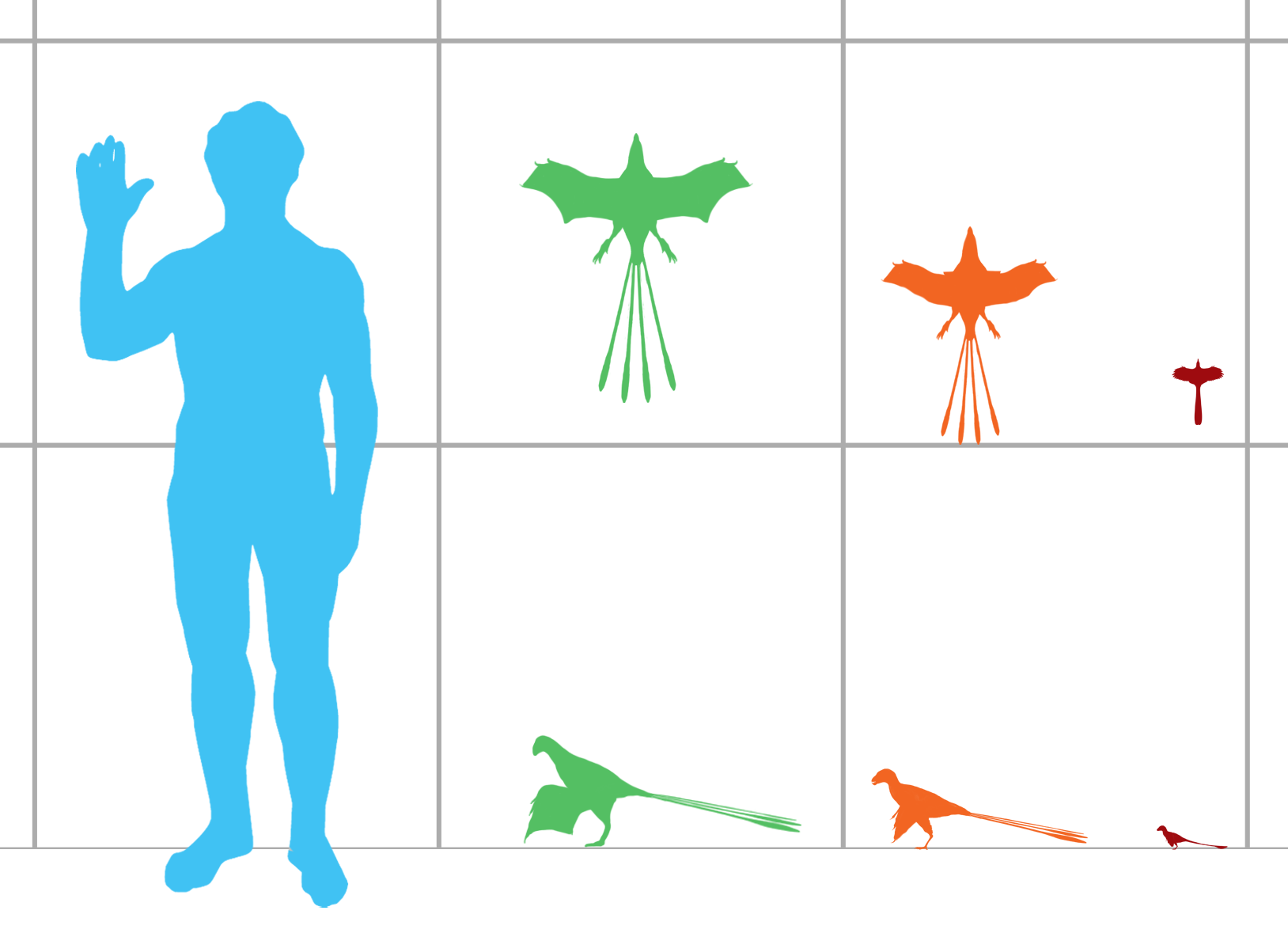|
Paravian
Paraves are a widespread group of theropod dinosaurs that originated in the Middle Jurassic period. In addition to the extinct dromaeosaurids, troodontids, anchiornithids, and possibly the scansoriopterygids, the group also contains the avialans, which include diverse extinct taxa as well as the over 11,000 species of living birds. Basal members of Paraves are well known for the possession of an enlarged claw on the second digit of the foot, which was held off the ground when walking in some species. A number of differing scientific interpretations of the relationships between paravian taxa exist. New fossil discoveries and analyses make the classification of Paraves an active subject of research. Description Like other theropods, all paravians are bipedal, walking on their two hind legs. The teeth of basal paravians were curved and serrated, but not blade-like except in some specialized species, such as '' Dromaeosaurus albertensis''. The serrations on the front edge of ... [...More Info...] [...Related Items...] OR: [Wikipedia] [Google] [Baidu] |
Anchiornis
''Anchiornis'' is a genus of small, four-winged Paraves, paravian dinosaurs, with only one known species, the type species ''Anchiornis huxleyi'', named for its similarity to modern birds. The Latin name ''Anchiornis'' derives from a Greek word meaning "near bird", and ''huxleyi'' refers to Thomas Henry Huxley, a contemporary of Charles Darwin. ''Anchiornis'' fossils have been found only in the Tiaojishan Formation of Liaoning Province, Liaoning, China, in rocks dated to the Late Jurassic, about 160 million years ago. It is known from hundreds of specimens, and given the exquisite preservation of some of these fossils, it became the first Mesozoic dinosaur species for which almost the entire life appearance could be determined, and an important source of information on the early evolution of birds. Discovery and history The first known fossil of ''Anchiornis'' (its type specimen) was dug up in the Yaolugou area of Jianchang County, Liaoning, China. These rocks have been diffic ... [...More Info...] [...Related Items...] OR: [Wikipedia] [Google] [Baidu] |
Overoraptor
''Overoraptor'' (, meaning "piebald thief") is an extinct genus of paravian theropod of uncertain affinities from the Late Cretaceous Huincul Formation of Argentinian Patagonia. The genus contains a single species, ''O. chimentoi'', known from several bones of the hands, feet, and hips alongside some vertebrae. Discovery and naming The fossil specimens of ''Overoraptor'' were unearthed by Dr. Roberto Nicolás Chimento in the Violante Farm locality, which is southeast of the Ezequiel Ramos-Mexía lake, in the northwestern portion of Rio Negro Province, Argentina. This outcrop is part of the Huincul Formation, which is dated to the Cenomanian-Turonian boundary in the Cretaceous period. This formation has yielded some of the largest South American dinosaurs including the massive sauropod ''Argentinosaurus'' and the theropod '' Mapusaurus''. The precise date of the discovery of the type series of ''Overoraptor'' is not publicly known, but the specimens were reposited in the ... [...More Info...] [...Related Items...] OR: [Wikipedia] [Google] [Baidu] |
Anchiornithidae
Anchiornithidae is a family of small Paraves, paravian dinosaurs. Anchiornithids have been classified at varying positions in the paravian tree, with some scientists classifying them as a distinct family, a basal subfamily of Troodontidae, members of Archaeopterygidae, or an assemblage of dinosaurs that are an evolutionary grade within Avialae or Paraves. Description Anchiornithids share many general features with other paravians, including early avialans. They were small and lightly-built feathered carnivores, similar in biology to ''Archaeopteryx'', early Dromaeosauridae, dromaeosaurids like ''Microraptor'', and particularly troodontids. They are almost exclusively known from Late Jurassic Chinese deposits, although ''Ostromia'' was discovered in Germany and ''Yixianosaurus'' (a putative member of the group only known from forelimbs) is believed to hail from the early Cretaceous. Most had long legs, arms, and hands, although some (''Eosinopteryx'') had slightly reduced foreli ... [...More Info...] [...Related Items...] OR: [Wikipedia] [Google] [Baidu] |
Imperobator
''Imperobator'' ("powerful warrior") is a genus of probable unenlagiid Paraves, paravian theropod dinosaurs, that lived during the Maastrichtian age of the Late Cretaceous in what is now James Ross Island in Antarctica. ''Imperobator'' is one of only two non-avian theropods known from Antarctica, crossing over to the landmass when it was part of Gondwana. The only described specimen was found in 2003 by an expedition launched by the University of California Museum of Paleontology and initially described as a Dromaeosauridae, dromaeosaur in 2007. The fossil was formally described as a new genus in 2019, and later searches reported more fossils from the site including teeth and skull bones. It was initially suggested that ''Imperobator'' may be one of the largest known paravians, comparable in size to gigantic dromaeosaurids such as ''Utahraptor'' and ''Austroraptor'', but subsequent anatomical revisions suggested a body length similar to that of ''Neuquenraptor'' and ''Deinonychus ... [...More Info...] [...Related Items...] OR: [Wikipedia] [Google] [Baidu] |
Microraptor
''Microraptor'' (Greek language, Greek, μικρός, ''mīkros'': "small"; Latin language, Latin, ''raptor'': "one who seizes") is a genus of small, four-winged dromaeosaurid dinosaurs. Numerous well-preserved fossil specimens have been recovered from Liaoning, China. They date from the early Cretaceous Jiufotang Formation (Aptian stage), 125 to 120 million years ago. Three species have been named (''M. zhaoianus'', ''M. gui'', and ''M. hanqingi''), though further study has suggested that all of them represent variation in a single species, which is properly called ''M. zhaoianus''. ''Cryptovolans'', initially described as another four-winged dinosaur, is usually considered to be a synonym of ''Microraptor''. Like ''Archaeopteryx'', well-preserved fossils of ''Microraptor'' provide important evidence about the evolutionary relationship between birds and earlier dinosaurs. ''Microraptor'' had long pennaceous feathers that formed aerodynamic surfaces on the arms and tail but a ... [...More Info...] [...Related Items...] OR: [Wikipedia] [Google] [Baidu] |
Scansoriopterygidae
Scansoriopterygidae (meaning "climbing wings") is an extinct family (biology), family of climbing and gliding maniraptoran dinosaurs. Scansoriopterygids are known from five well-preserved fossils, representing four species, unearthed in the Tiaojishan Formation fossil beds (dating to the mid-late Jurassic Period) of Liaoning and Hebei, China. ''Scansoriopteryx , Scansoriopteryx heilmanni'' (and its likely synonym ''Epidendrosaurus ninchengensis'') was the first non-avian dinosaur found that had clear adaptations to an arboreal or semi-arboreal lifestyle–it is likely that they spent much of their time in trees. Both specimens showed features indicating they were juveniles, which made it difficult to determine their exact relationship to other non-avian dinosaurs and birds. It was not until the description of ''Epidexipteryx hui'' in 2008 that a subadult specimen was known. In 2015, the discovery of an adult specimen belonging to the species ''Yi (dinosaur), Yi qi'' showed th ... [...More Info...] [...Related Items...] OR: [Wikipedia] [Google] [Baidu] |
Dromaeosauridae
Dromaeosauridae () is a family of feathered coelurosaurian theropod dinosaurs. They were generally small to medium-sized feathered carnivores that flourished in the Cretaceous Period. The name Dromaeosauridae means 'running lizards', from Greek ('), meaning 'running at full speed', 'swift', and ('), meaning 'lizard'. In informal usage, they are often called raptors (after '' Velociraptor''), a term popularized by the film ''Jurassic Park''; several genera include the term "raptor" directly in their name, and popular culture has come to emphasize their bird-like appearance and speculated bird-like behavior. Dromaeosaurid fossils have been found across the globe in North America, Europe, Africa, Asia and South America, with some fossils giving credence to the possibility that they inhabited Australia as well. The earliest body fossils are known from the Early Cretaceous (145–140 million years ago), and they survived until the end of the Cretaceous (Maastrichtian stage, 66 ... [...More Info...] [...Related Items...] OR: [Wikipedia] [Google] [Baidu] |
Troodontidae
Troodontidae is a clade of bird-like theropod dinosaurs from the Late Jurassic to Late Cretaceous. During most of the 20th century, troodontid fossils were few and incomplete and they have therefore been allied, at various times, with many dinosaurian lineages. More recent fossil discoveries of complete and articulated specimens (including specimens which preserve feathers, eggs, embryos, and complete juveniles), have helped to increase understanding about this group. Anatomical studies, particularly studies of the most primitive troodontids, like '' Sinovenator'', demonstrate striking anatomical similarities with ''Archaeopteryx'' and primitive dromaeosaurids, and demonstrate that they are relatives comprising a clade called Paraves. Evolution The oldest definitive troodontid known is '' Hesperornithoides'' from the Late Jurassic of Wyoming. The slightly older '' Koparion'' of Utah is only represented by a single tooth, and small maniraptoran teeth from the Middle Jurassic ... [...More Info...] [...Related Items...] OR: [Wikipedia] [Google] [Baidu] |







